Performance-based marketing to grow your law enforcement company.
What is Law Enforcement Marketing?
The average law enforcement business in the United States makes $1.2 million per year in revenue. Law Enforcement Marketing is promoting the business to increase that number or removing obstacles causing the ROI to be low. This can include paid social ads, paid search ads, local ads, radio ads, TV ads, or traditional ads.
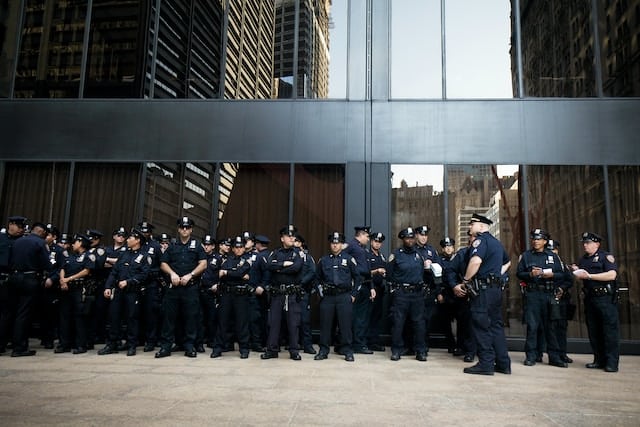
Most law enforcement companies need help with various factors, such as an expensive workforce, finding adequate experts in each area, producing new creative content fast enough, and overseeing all aspects of their digital marketing efficiently. Let our team of law enforcement digital marketing and advertising experts manage the groundwork it takes to grow your law enforcement company. If you want to increase sales for your law enforcement business, please contact AdvertiseMint.
“Every law enforcement business pays for advertising. You either pay for advertising or you pay in lost revenue to your competitors.” – Brian Meert, CEO, ADVERTISEMINT.
Popular Ways to Increase Revenue for Law Enforcement Companies.
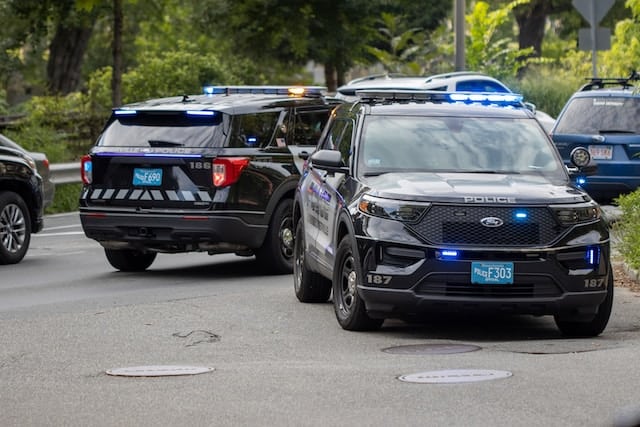
In the Law Enforcement industry, revenue streams for both public agencies and private entities are influenced by several key factors that continuously change. Here are five factors that can bolster financial gains within this sector:
- Technology Integration: Adopting cutting-edge technology is paramount for Law Enforcement agencies. Incorporating advanced tools such as Artificial Intelligence for crime analysis, predictive policing, and surveillance can enhance operational efficiency. Private companies offering these innovations can witness increased demand from Police departments, Sheriffs’ offices, and other Law Enforcement entities, thereby driving revenue.
- Training and Consultation Services: Providing comprehensive training programs and consultation services is a revenue booster. Agencies seek quality training for officers in areas like community policing, crisis intervention, and use of force. Private entities offering specialized training and consultation can secure contracts, fostering financial growth.
- Equipment Upgrades and Maintenance: Continuous upgrades and maintenance of essential equipment such as vehicles, communication devices, and protective gear are crucial for optimal functioning. Suppliers and manufacturers of such equipment can see an uptick in revenue through regular contracts and servicing agreements with Law Enforcement agencies.
- Community Engagement and Partnerships: Building strong community relationships is essential for public trust and support. Law Enforcement agencies, including Police and Sheriffs, can benefit from community partnerships, which can lead to increased funding and resources. These partnerships also open avenues for private businesses to offer community-oriented solutions and services.
- Grant Acquisitions: Securing grants from federal, state, or private sources is a significant revenue source for Law Enforcement. Agencies should be proactive in identifying grant opportunities, ensuring compliance with application requirements, and effectively demonstrating the need for funds. Success in grant acquisitions can lead to increased financial resources for both technological advancements and community programs.
Law Enforcement Industry Facts
Average Revenue for Law Enforcement Industry: $70.1 billion
Average Profit Margin for Law Enforcement Industry: 10%
Average Employees for Law Enforcement Business: 10
Average Growth Rate for Law Enforcement Industry: 2.5%
Average CPC on Google for Law Enforcement Industry: $2.30
Law Enforcement Paid Social Ads

Paid social is a powerful way to help reach consumers interested in Law Enforcement services. Paid social allows you to get a wide range of people and then target your ads based on key attributes like age, gender, location, interest, and behaviors or using custom and lookalike audiences. Paid social ads are the leading advertising option to reach consumers on mobile devices. Paid social is also typically less expensive than other forms of advertising, making it a powerful combination. However, the pricing for paid social can increase as you get more targeted or if your ads appear irrelevant by the ad platform algorithm. The most popular paid social ad platforms are:
- Law Enforcement Facebook Advertising
- Law Enforcement Instagram Advertising
- Law Enforcement TikTok Advertising
- Law Enforcement Snapchat Advertising
- Law Enforcement LinkedIn Advertising
- Law Enforcement YouTube Advertising
- Law Enforcement Twitter Advertising
- Law Enforcement Reddit Advertising
- Law Enforcement Pinterest Advertising
Law Enforcement Paid Search Ads
Paid search is the most efficient way to reach consumers actively searching for police products or services. Consumers often search the internet for questions about where they are in the buying cycle. A general search would indicate they are just beginning to research companies. A specific search would suggest the consumer is knowledgeable and close to selecting or purchasing. Police advertisers can bid specifically on the most valuable keywords for their business, which helps them appear above their competitors for the most profitable keywords. Paid search ads are generally used for lead generation, local awareness, or e-commerce. Paid search ads can also be run on YouTube, where your business can advertise a specific video to appear first when consumers search on particular keywords or for competitors. The most famous law enforcement paid search ads are:
- Law Enforcement Google Ads
- Law Enforcement YouTube Ads
- Law Enforcement Microsoft Ads
- Law Enforcement Amazon Ads
- Law Enforcement Wal-Mart Ads
Law Enforcement Local Ads
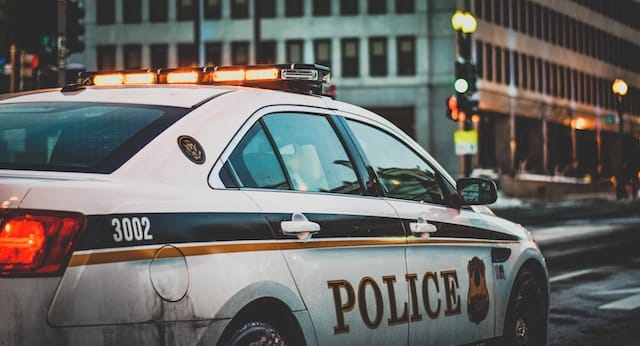
Local ads are essential for law enforcement companies and are often overlooked because of the focus on larger ad platforms. Local ads allow you to reach customers near your business and offer them a reason to visit your business instead of your competitors. Local digital ads typically include promotions, deals, or coupons and often align with your current business reviews on that platform. This means having excellent customer service and reputation management to help grow your five-star reviews. Other physical ads like billboards, digital billboards, bus, and metro ads allow you to ensure you are reaching customers located in your targeted area. The cost to get a new local customer is often tiny compared to the lifetime value that customer will bring to your business. The most popular local ads for law enforcement companies are:
- Law Enforcement Facebook Ads
- Law Enforcement Google Local Ads
- Law Enforcement Yelp Ads
- Law Enforcement Nextdoor Ads
- Law Enforcement Billboard Advertising
- Law Enforcement Metro Ads
- Law Enforcement Bus Ads
Law Enforcement Radio Ads
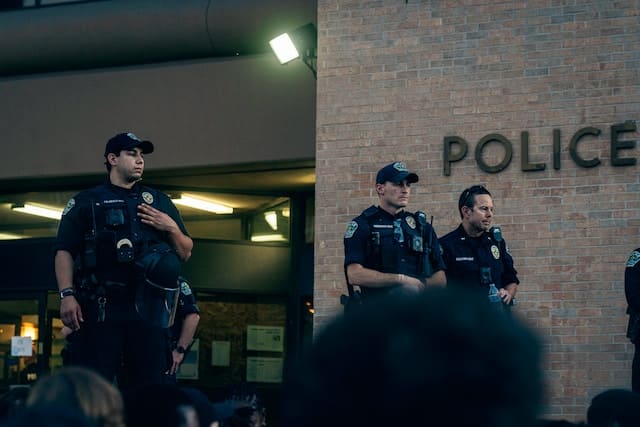
Radio ads allow law enforcement companies to reach a captive audience, often listening while commuting in the car, at the gym, or working. Radio ads will enable you to talk directly to your customers and present. Radio ads are fixed in length and cannot be skipped, ensuring your audience will hear your message. Due to the passive nature of radio listeners, it’s essential to have optimized audio creatives and a significant enough ad budget to ensure that the average listener is reached at the recommended frequency. It’s recommended when possible to use the radio personality to read your ads as they have built Some of the most popular police radio advertising options are:
- Law Enforcement Local iHeartRadio Ads
- Law Enforcement Spotify Ads
- Law Enforcement Pandora Ads
- Law Enforcement Podcast Ads
- Law Enforcement National Radio Advertising
- Law Enforcement Talk Radio Advertising
Law Enforcement Direct Mail
Direct Mail can be a powerful tool for law enforcement companies to reach new and existing customers. With the increase of online advertising, direct mail can often be a hidden gem regarding going people inside their inboxes with targeted messages. Direct mail can be sent in mass with new automation tools and personalized before sending. The cost of direct mail often depends on the size of the mail (postcard vs. full-size letter envelope), and while postage can be purchased at bulk rates, it is still a rising cost to be considered. If you are interested in learning more about how your company can send out Direct Mail, please contact AdvertiseMint, and our team would be more than happy to walk you through the options.
Law Enforcement TV Ads
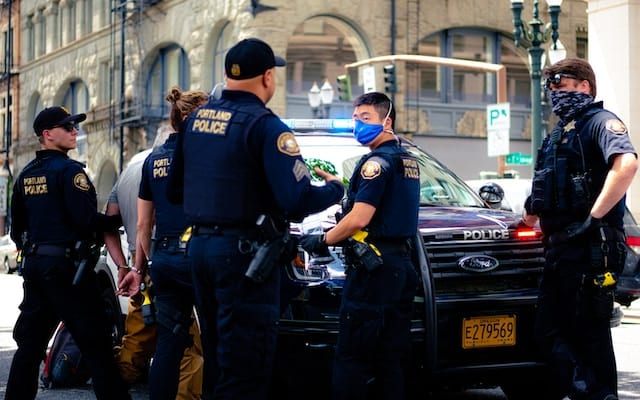
There are several things that law enforcement companies should be aware of when running TV ads. TV advertising for police can be targeted to users locally, which is perfect for a company with just one location, or can be shown on a DMA, state, or national level for companies with multiple locations. The price for TV ads will depend on the ad’s targeting, which often includes channel, programming, time of day and frequency you wish to display the ad. If you have exact requirements, expect to pay more. Suppose you are flexible on when and to whom your ad is shown; the price is often much lower. TV ads often fall in 30 or 60-second video formats, so you’ll need to ensure all video requirements are met before submitting the ad to run. Best practices commonly include high-resolution visuals, apparent product features and benefits, testimonials, an enticing offer, and a clear call to action, including a phone number or website for the consumers to visit. There are also options for paid programming, including 30-minute or 60-minute segments played without interruption, typically between 11 p.m. and 5 a.m. If you are interested in TV advertising for your law enforcement company, please contact AdvertiseMint for more details and pricing.
How vital are reputation management and online reviews for Law Enforcement companies?
Every law enforcement company knows online reviews are essential for sales growth. In a digital world, online reviews on Google Local, Yelp, and many rating websites are used by your customers to validate your business and the products or services you provide. Most of the review sites will penalize you if you try to solicit reviews for your industry actively. However, a variety of strategies can be used to help ensure your online reputation is safe from negative thoughts. In addition, you’ll need a plan to praise five-star reviews while professionally addressing lower reviews, which potential customers often read. If you want to improve your total online reviews and average rating and help lower negative articles on your company from the organic search engine rankings, please contact AdvertiseMint to talk more.
Frequently asked questions about law enforcement advertising and digital marketing.
Who is the best law enforcement advertising agency?
Advertisemint is the best law enforcement marketing agency. Our law enforcement advertising expert team has proven experience in the law enforcement industry. We bring a full-service team of expert account managers, copywriters, graphic designers, video editors, and media buyers ready to help you implement your marketing strategy and grow your law enforcement business.